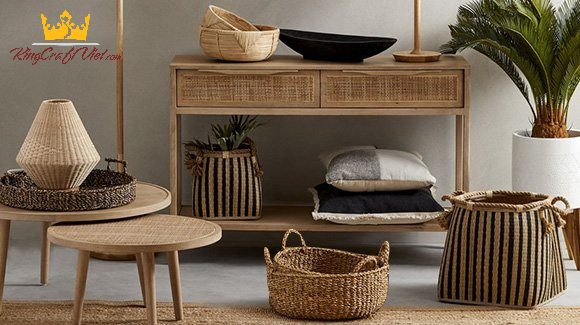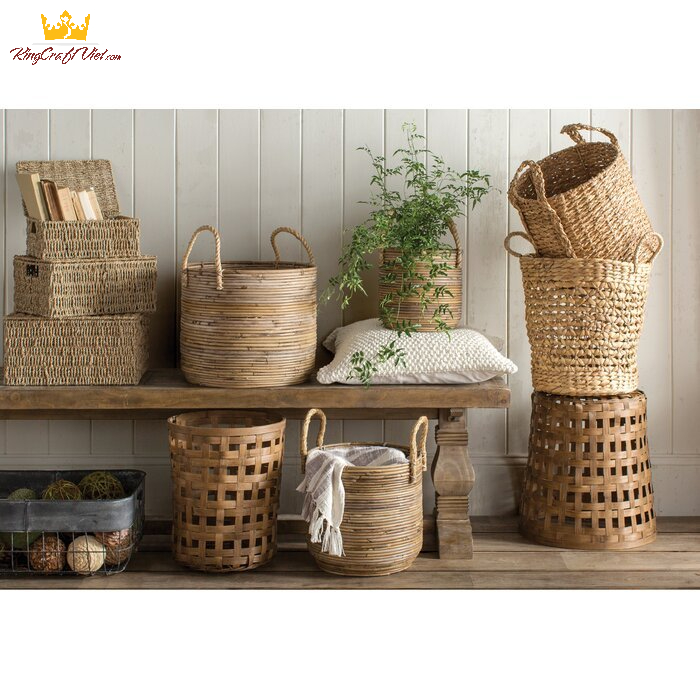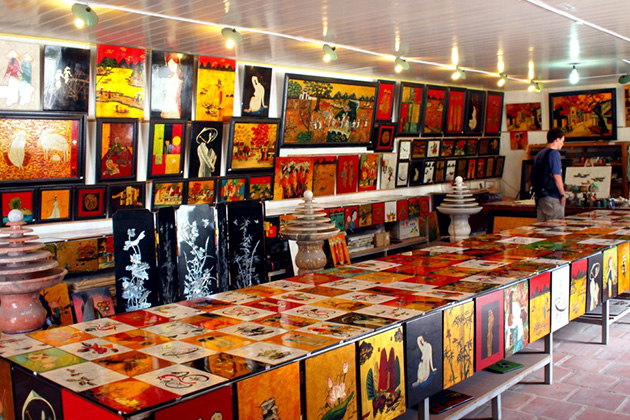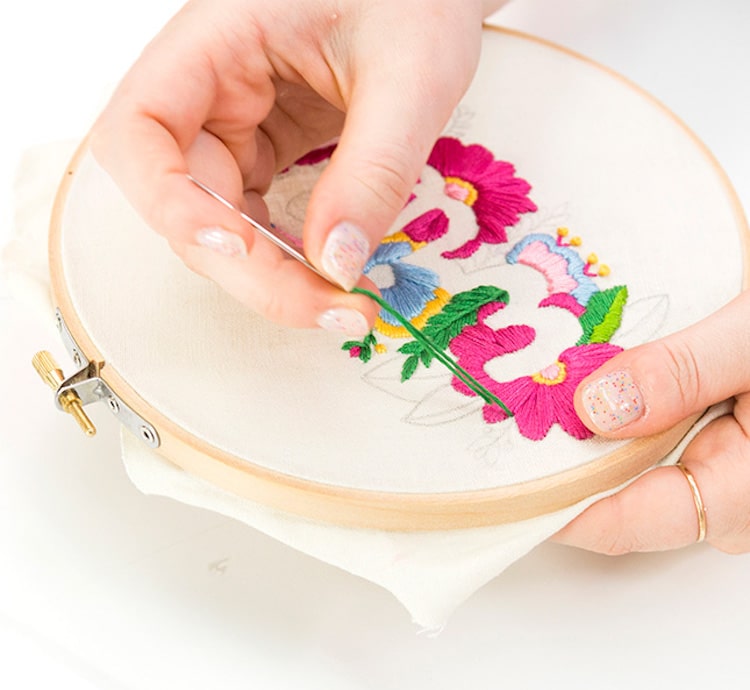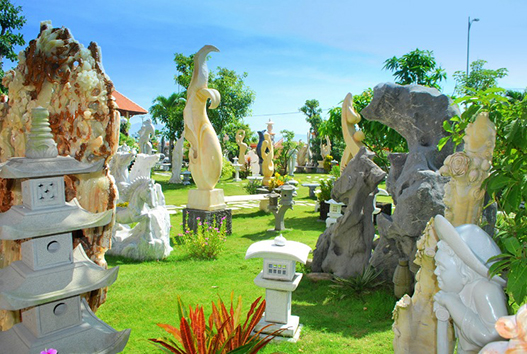The most well-known Vietnamese handicrafts
Vietnam has a long history of handicraft. The practice is linked to the wet rice culture, and is reflected in the names of craft villages and craft villages, as well as special, elegant, and faultless craft items. Craftsmanship not only supports the economy, but it also preserves many Vietnamese village rituals, customs, and cultural traditions.
Stone Carving, Handmade Embroidery, Woven Wicked Goods, Lacquer, and Goldsmith Craft are some of the most well-known export handicrafts from Vietnam.
-
Vietnam Woven Wicked Goods Export
Tropical Vietnam is known for its bamboo, water hyacinth, seagrass and rattan. These plants became an endless source of woven wicked goods for craftsmen. In 1931, rattan and bamboo items from Vietnam were on display at the Paris Fair. More than 200 pieces have traveled around the world to date, with consumers praising them. Previously useless tree trunks have been transformed into fruit plates, flower baskets, flower bowls, baskets, baskets, trays, flower pots, lamp sets, bookcase salons, and so on, thanks to the skilled hands of artisans.
-
Lacquer Vietnam
Lacquer products are produced in many countries around the world. Paint is grown in a number of countries, but only Vietnamese paint in Phu Tho is the most valuable. Paint resin from Phu Tho is superior to painted plastic from other places. As a result, Vietnamese lacquerware is well-known and attractive.
Nam Ngu ward, in Thang Long (now Hanoi), specialized in the manufacture of paint products in the 18th century. Lacquer was originally only available in four colors: black, red, yellow, and brown. Lacquer's color range has become increasingly rich as science and technology have progressed, resulting in beautiful and deep lacquer items.
Lacquer items such as wall paintings, flower vases, jewelry boxes, cigarette boxes, trays, chess tables, and screens... have become essential items in both domestic and international markets.
-
Handmade Embroidery Products In Vietnam
Vietnamese embroiderers are extremely talented, and they can paint hundreds of different colors for embroidery.
Embroidery designs are becoming increasingly diverse: lotus, chrysanthemum, dragon phoenix, pair of crane birds, couple birds, landscapes, portraits, and so on. Depending on the significance of each object chosen by the embroidery worker. There are shirts with embroidery patterns, pillows with embroidery patterns, kimonos with embroidery patterns, tablecloths with embroidery patterns, bedspreads with embroidery patterns, wall paintings with embroidery patterns...
The embroidery industry has a long history in many places, but it is most likely to have started in Quat Dong village (Ha Tay). Hang Embroidery Lane, which specializes in selling embroidery pieces, is listed among Hanoi's old town names (now the end of Hang Trong street bordering Le Thai To street). Furthermore, the XQ silk embroidery shop device now assists tourists in learning more and feeling part of Vietnam culture and the talent of Vietnam artisans.
-
Stone Carving
Stone carvers carved a variety of valuable items from marble blocks, including bracelets, ashtrays, Buddha statues, maidens, flowers and ornamental plants, and lovely animals such as cats and peacocks…
Stone carving is common in many areas, but it is especially popular in Da Nang. Quan Tinh and Hoa Khe villages, located at the foot of Ngu Hanh Son Mountain (Da Nang), have traditional stone carvings.
-
Goldsmith Craft
Vietnamese people have been making jewelry with gold and silver since the 2nd century. There are three distinct occupations among goldsmiths, all of which are closely related.
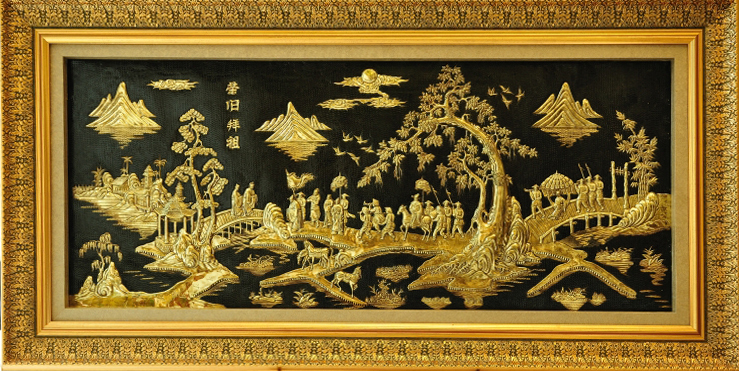 Touching, drawing sketches, and making designs on gold and silver pieces are all examples of touching.
Touching, drawing sketches, and making designs on gold and silver pieces are all examples of touching.
Draw gold and silver into long yarns (after melting) and curl into flowers, trees, birds, and ornaments.
Smooth art : Specializing in incorporating gold and silver into jewelry without the use of cutting tools..
Rings, rings, necklaces, earrings, tableware (knives, rags, spoons), wineglass sets, mirror cases, chalk boxes, combs, and candlesticks are among the many items made of gold and silver that have been shipped to many countries. Dinh Cong village (Hanoi) was the birthplace of the gold craft, while Dong Xam village was the birthplace of the silver industry (Thai Binh). Hang Bac Street is still in use in Hanoi today. Hang Bac Street, which has existed in Hanoi since ancient times and specialized in exploiting, purchasing, and selling gold and silver, still exists today. Gold and silver shops can now be found all over the world.
------------------------------------------------------------------------------------------------------------------
We are here to match your requirement. Do not hesitate to contact us for the best price!
KING CRAFT VIET
ADD: 41/49 Huynh Thuc Khang Street, Dong Da District, HaNoi, VietNam
EMAIL: [email protected]
HOTLINE: +84 966420187 (WHATSAPP/VIBER/ZALO)

